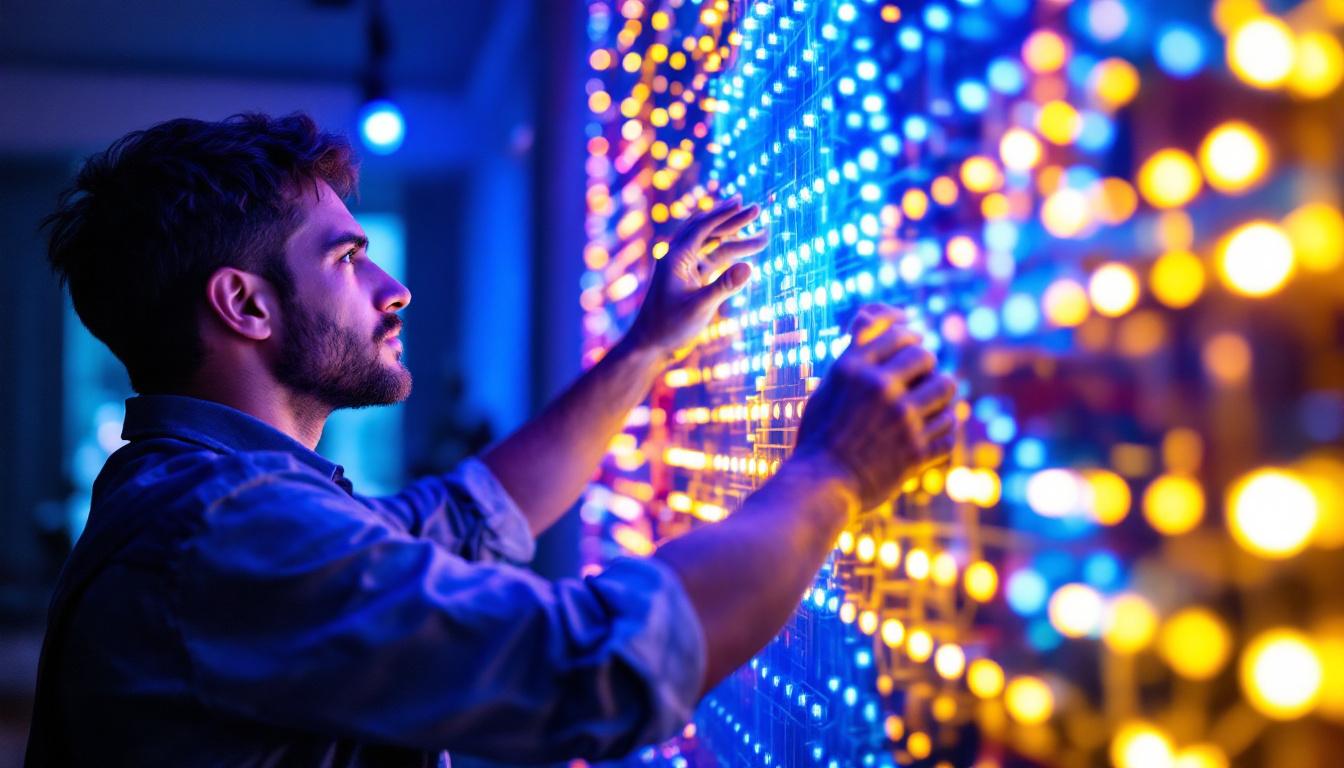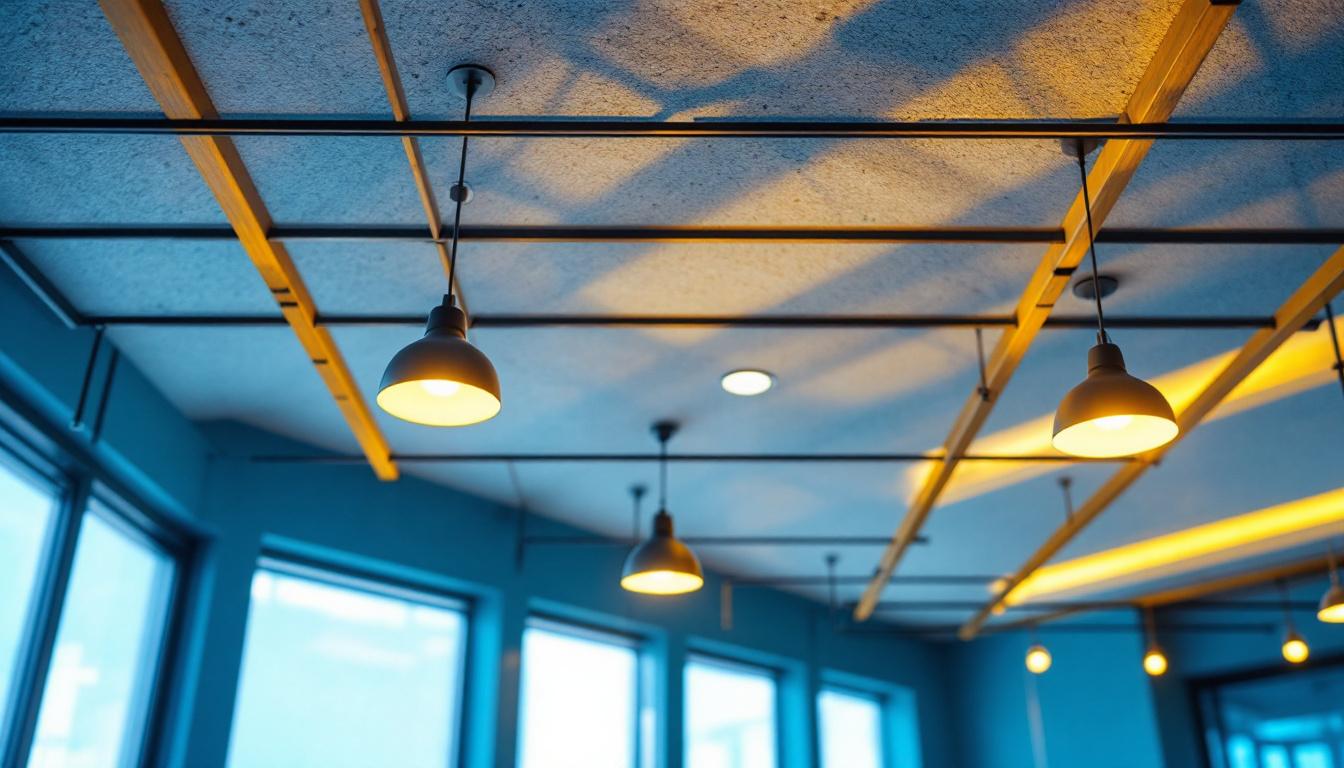
LED light artwork represents a fascinating fusion of creativity and cutting-edge technology. For lighting contractors, mastering this niche requires more than just technical know-how; it demands an appreciation of artistic intent, spatial dynamics, and the nuanced behavior of light. LED installations are no longer confined to functional illumination—they have become integral to immersive environments, public art, and commercial branding.
Before diving into the technicalities, it’s crucial to recognize that LED artwork is a multidisciplinary endeavor. It involves collaboration with artists, architects, and designers to ensure that the lighting enhances the visual narrative rather than detracting from it. Lighting contractors who understand this synergy can avoid costly missteps and elevate their projects to new heights.
One of the most compelling aspects of LED light artwork is its ability to transform spaces through dynamic color and movement. Artists often utilize programmable LEDs to create installations that change in response to environmental factors or audience interaction. This interactivity not only captivates viewers but also invites them to engage with the artwork in a personal way, fostering a deeper connection. For instance, installations that react to sound or motion can create a dialogue between the artwork and its audience, making the experience unique for each individual.
Moreover, the versatility of LED technology allows for a wide range of applications, from large-scale public installations to intimate gallery pieces. In urban settings, LED art can redefine the nighttime landscape, turning mundane structures into vibrant canvases. This potential for transformation has led many cities to invest in LED art projects as a means of revitalizing public spaces and enhancing community engagement. By incorporating sustainable practices, such as energy-efficient LEDs and solar power, these installations not only beautify but also promote environmental consciousness, making them a beacon of modern artistry and responsibility.
One of the most frequent errors lighting contractors make is approaching LED artwork purely from a technical perspective. While factors like lumens, color temperature, and beam angle are critical, they must be balanced with the artist’s vision. Ignoring the creative intent can result in lighting that feels out of place or diminishes the emotional impact of the piece.
For example, an installation designed to evoke warmth and intimacy may be compromised if the lighting is too harsh or cold. Early and ongoing communication with the artist or designer ensures that the final lighting scheme supports the intended mood and message. This collaboration can lead to innovative solutions, such as using colored filters or adjustable fixtures that can be modified to enhance the artwork’s narrative. Engaging in discussions about the emotional journey the piece aims to convey can also inspire lighting choices that resonate deeply with viewers, creating a more immersive experience.
Ambient lighting plays a pivotal role in how LED artwork is perceived. Overlooking the surrounding environment can lead to installations that are either washed out or overly prominent, disrupting the harmony of the space. Lighting contractors must conduct thorough site assessments to understand natural light patterns, existing artificial lighting, and reflective surfaces.
Consider a lobby installation where daylight floods through large windows during the day but dims significantly at night. The LED artwork should be designed to adapt or complement these variations, possibly through dimming controls or programmable settings. Additionally, the use of sensors that adjust the LED output based on real-time ambient light can enhance the viewer’s experience, ensuring that the artwork remains captivating regardless of the time of day. This level of adaptability not only showcases the artwork in its best light but also demonstrates a commitment to sustainability by optimizing energy use.
LEDs are praised for their energy efficiency and longevity, but improper heat management can drastically reduce their lifespan and performance. Heat buildup can cause color shifts, flickering, and premature failure, which are particularly problematic in high-profile art installations.
Lighting contractors must ensure that fixtures have adequate ventilation and are installed according to manufacturer specifications. Using high-quality components with robust thermal management features is an investment that pays off in reliability and client satisfaction. Furthermore, incorporating heat sinks or selecting fixtures designed for high-performance environments can significantly mitigate these risks. Regular maintenance checks can also be scheduled to monitor the performance of the LEDs, ensuring that any potential issues are addressed before they affect the artwork’s presentation.
The quality of light is as important as its intensity. Poor color rendering can distort the appearance of artwork, leading to misinterpretations or diminished aesthetic value. LEDs with a Color Rendering Index (CRI) below 80 may not accurately reproduce colors, which is unacceptable in art-focused projects.
Furthermore, color consistency across multiple fixtures is essential. Variations can create a patchy or uneven look, undermining the cohesiveness of the installation. Contractors should source LEDs from reputable manufacturers and perform pre-installation testing to ensure uniformity. Additionally, utilizing tunable white LEDs can allow for adjustments in color temperature throughout the day, aligning the artwork’s presentation with the natural light cycle and enhancing its visual appeal. This attention to detail not only preserves the integrity of the artwork but also elevates the overall aesthetic experience for viewers.
Modern LED artwork often incorporates dynamic elements—changing colors, patterns, or intensities—to engage viewers. Installing rigid, non-programmable systems limits the potential of the artwork and can frustrate both artists and clients.
Lighting contractors should advocate for and implement advanced control systems that allow for easy adjustments and programming. This flexibility not only enhances the artwork’s impact but also future-proofs the installation against evolving creative needs. Integrating user-friendly interfaces or mobile applications can empower artists and curators to experiment with different lighting scenarios, encouraging a more interactive relationship with the artwork. Such systems can also facilitate special events or exhibitions, allowing for tailored lighting experiences that resonate with specific themes or audiences, ultimately enriching the viewer’s engagement with the art.
Effective communication is the foundation of any successful LED light artwork project. Lighting contractors should engage in detailed consultations with artists, designers, and stakeholders to understand the conceptual goals, technical requirements, and logistical constraints.
Documenting these discussions and creating detailed lighting plans can prevent misunderstandings and ensure alignment throughout the project lifecycle. This initial phase also provides an opportunity to explore various design inspirations and technological innovations that could enhance the artwork. By sharing case studies or examples of previous projects, contractors can help clients visualize the potential outcomes and inspire creative solutions tailored to their specific vision.
Visiting the installation site multiple times and conducting environmental assessments are essential steps. Contractors should evaluate factors such as wall textures, ceiling heights, and potential obstructions that may affect light distribution.
Where possible, creating mock-ups or prototypes allows for real-world testing of lighting effects. This approach helps identify unforeseen issues and provides clients with a tangible preview of the final outcome. Additionally, incorporating feedback from the artist during this phase can lead to adjustments that enhance the visual impact of the installation, ensuring that the final product aligns closely with the original artistic intent.
Investing in high-quality LEDs, drivers, and control systems reduces maintenance costs and enhances performance. Additionally, meticulous installation practices—such as secure mounting, proper wiring, and adherence to safety codes—are critical for durability and safety.
Contractors should also consider the environmental conditions, selecting fixtures rated for humidity, temperature extremes, or outdoor exposure as necessary. Furthermore, they should stay informed about emerging technologies and materials that could improve energy efficiency or aesthetic appeal, such as tunable white LEDs or color-changing systems that can adapt to different settings and themes.
Utilizing programmable LED controllers enables dynamic lighting effects that can be tailored to different times of day, events, or moods. Contractors should be proficient in configuring these systems or collaborate with specialists to deliver seamless integration.
Training clients on system operation and providing comprehensive documentation ensures long-term satisfaction and ease of use. Additionally, offering ongoing support and updates can help clients maximize the potential of their lighting systems, allowing them to experiment with new programming techniques or adapt the artwork for special occasions, thereby keeping the installation fresh and engaging over time.
After installation, conducting a thorough evaluation confirms that the lighting meets artistic and technical standards. Contractors should solicit feedback from artists and clients to address any adjustments promptly.
Establishing a maintenance schedule, including cleaning, firmware updates, and component inspections, preserves the integrity of the artwork and prevents unexpected failures. Moreover, documenting the maintenance process can provide valuable insights for future projects, helping contractors refine their techniques and improve the overall quality of their installations. This proactive approach not only enhances client relationships but also fosters a culture of continuous improvement within the lighting design community.
A contemporary art museum commissioned an LED light installation designed to respond to visitor movement. The lighting contractor collaborated closely with the artist to integrate motion sensors and programmable LEDs, creating an immersive experience.
Key takeaways included the importance of flexible control systems and rigorous testing to synchronize sensor input with lighting output. The project’s success hinged on balancing technical precision with artistic expression.
In a city plaza, an LED artwork featuring color-changing panels was installed to enhance nighttime ambiance. Initial challenges arose from ambient street lighting overpowering the installation and inconsistent color temperatures across fixtures.
The contractor resolved these issues by adjusting LED intensities, installing shielding to reduce light pollution, and standardizing fixture models. This case underscores the necessity of environmental consideration and component uniformity.
LED light artwork offers lighting contractors an exciting opportunity to blend technology with creativity. Avoiding common mistakes—such as neglecting artistic vision, overlooking ambient conditions, and compromising on quality—can dramatically improve project outcomes.
By embracing best practices like thorough consultation, site analysis, quality component selection, and advanced control integration, contractors can deliver installations that captivate audiences and stand the test of time. Ultimately, success in this field depends on a commitment to collaboration, precision, and continuous learning.
Ready to elevate your LED light artwork installations with the finest lighting solutions? At LumenWholesale, we provide lighting contractors with spec-grade lighting products that combine quality and affordability. Our extensive selection is designed to meet the highest industry standards, ensuring that your projects shine with reliability and performance. Say goodbye to inflated markups and embrace the convenience of free shipping on bulk orders. Make your next project a masterpiece with the best value in wholesale lighting. Discover our products now and bring your artistic vision to life.

Discover how utility light fixtures can enhance your business’s profitability.

Discover how motion sensor front porch lights can boost your lighting contracting business.

Discover expert insights on light fixtures for drop ceilings, answer common questions, and learn how to choose the best lighting solutions to enhance your space efficiently..

Discover innovative strategies from expert lighting contractors on selecting and installing large flush mount chandeliers.